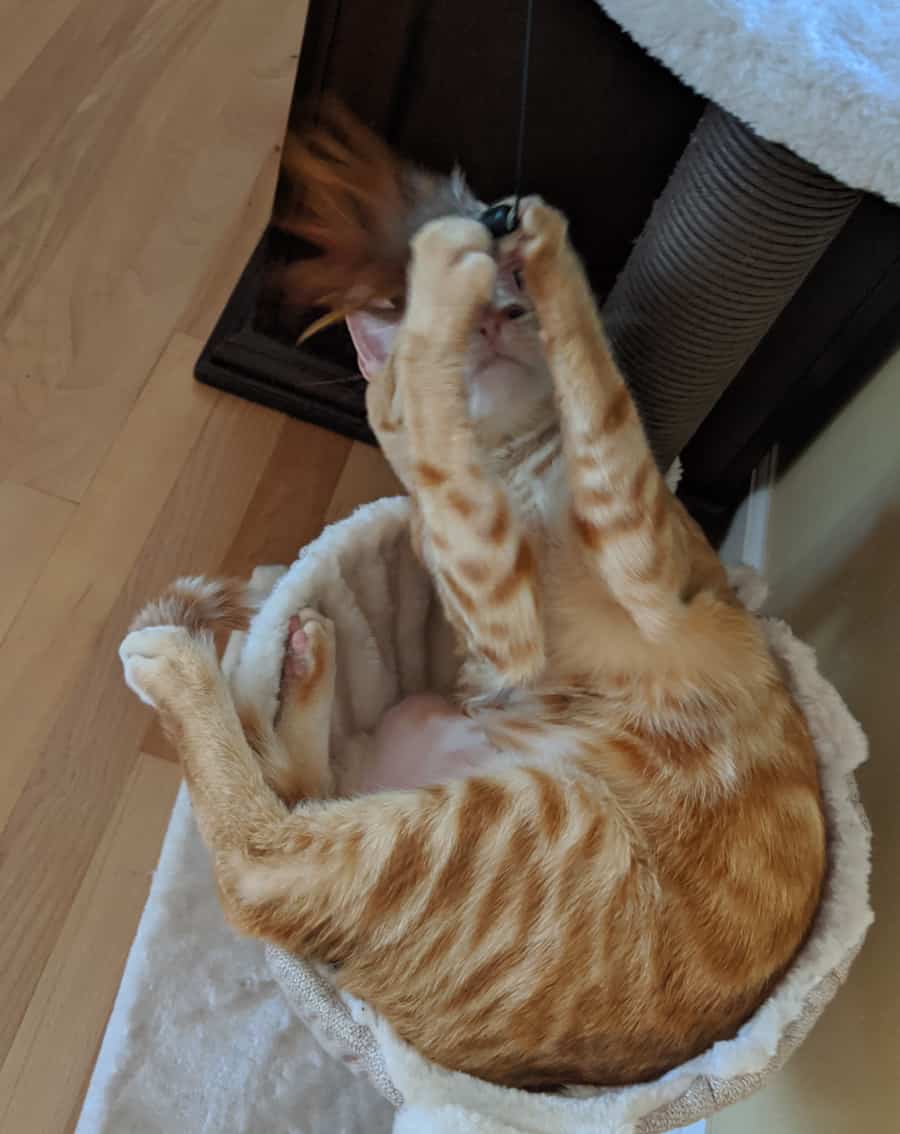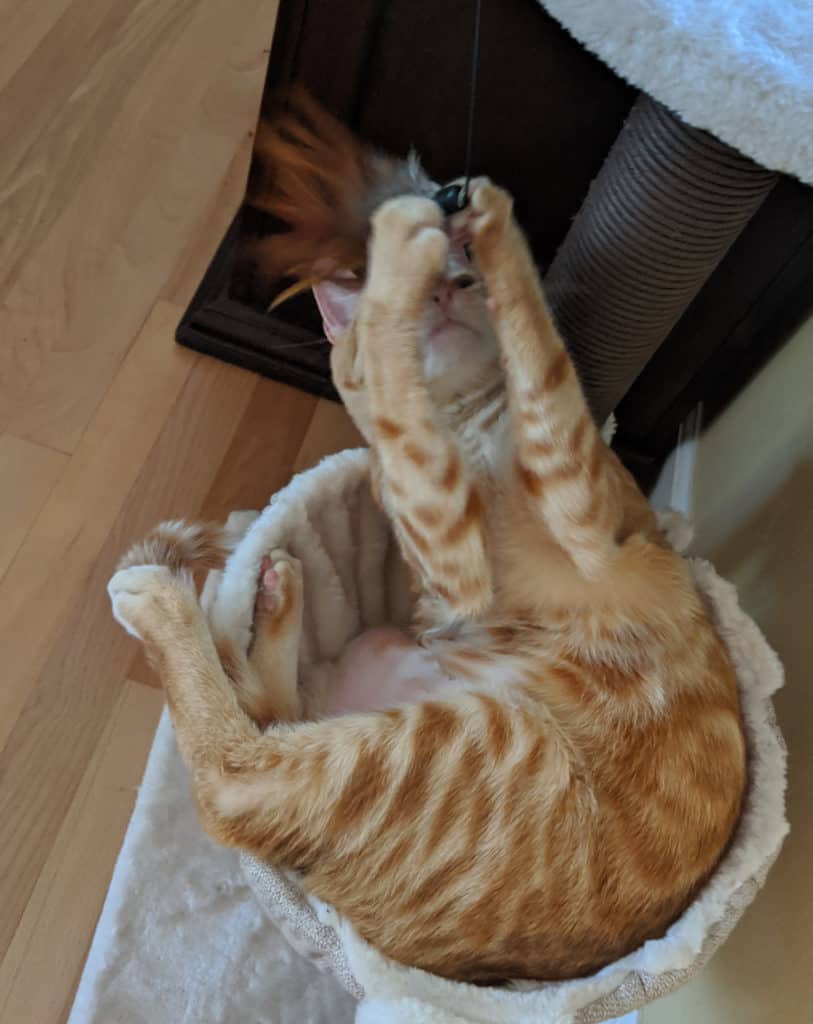We like to display our holiday and birthday cards on our mantle. Invariably, I will come in to the living room to find all the cards piled at the front of the fireplace. At first I thought our cat, who loves to jump on onto anything high, was accidentally knocking the cards over as she walked across the mantle.
Then one day, I happened to be in the living room when our cat was again up on the mantle. I witnessed our cat casually and purposefully knock each card, one by one, off the mantle and onto the floor. She then calmly continued her walk across the wooden platform before leaping back down as if nothing untoward had happened.
Social media is full of similar memes of cats knocking things off of counter tops. So, why is it that some cats love to knock things over?
Hunting Practice
Cats are instinctual hunters. As part of hunting, cats will use their paws to explore objects. If the object they happen to paw starts sprinting away, the cat will race after it.
Cats like to “toy” with prey. So dropping a stunned mouse and then pawing at it to make it run, is part of the hunting process for felines.
In the same vein, pawing things off of ledges, tables, countertops, and mantles is one way your cat practices their hunting skills.

Your Cat is Bored
Your cat also likes to push things off of counters and other high places because it’s just fun.
One way to help divert your cat’s attention from this activity is to make sure they receive enough stimulation throughout the day.
Spend some time playing with your cat.
Set up a cat tunnel or build one from the cardboard boxes or paper bags that you have.
Hang up a bird feed outside a window that your cat can sit at for some natural “cat TV” time.
Your Cat Wants Your Attention
If your cat knocking stuff off of shelves and counter tops brings you racing in to the room, your cat may repeat the action.
A 2017 study found that cats prefer spending time with humans over even food and toys. Cats who are lonely can act out.
Make sure you are spending quality time with your cat every day. Spend some time playing or grooming (if your cat likes to be brushed) to help strengthen the bond you have with your cat. Your cat will be happier and calmer with positive attention.
Cat Proof Your House
If you cat has a tendency to knock things over, make sure you move any breakable items out of the reach of your cat. Move glass, porcelain, and other fragile items off of your mantle piece, shelves, and countertops. If you are able to, move these items behind glass doors or to locations that your cat can’t reach.
References
Shreve, K. R. V., Mehrkam, L. R., & Udell, M. A. (2017). Social interaction, food, scent or toys? A formal assessment of domestic pet and shelter cat (Felis silvestris catus) preferences. Behavioural processes, 141, 322-328. https://doi.org/10.1016/j.beproc.2017.03.016







